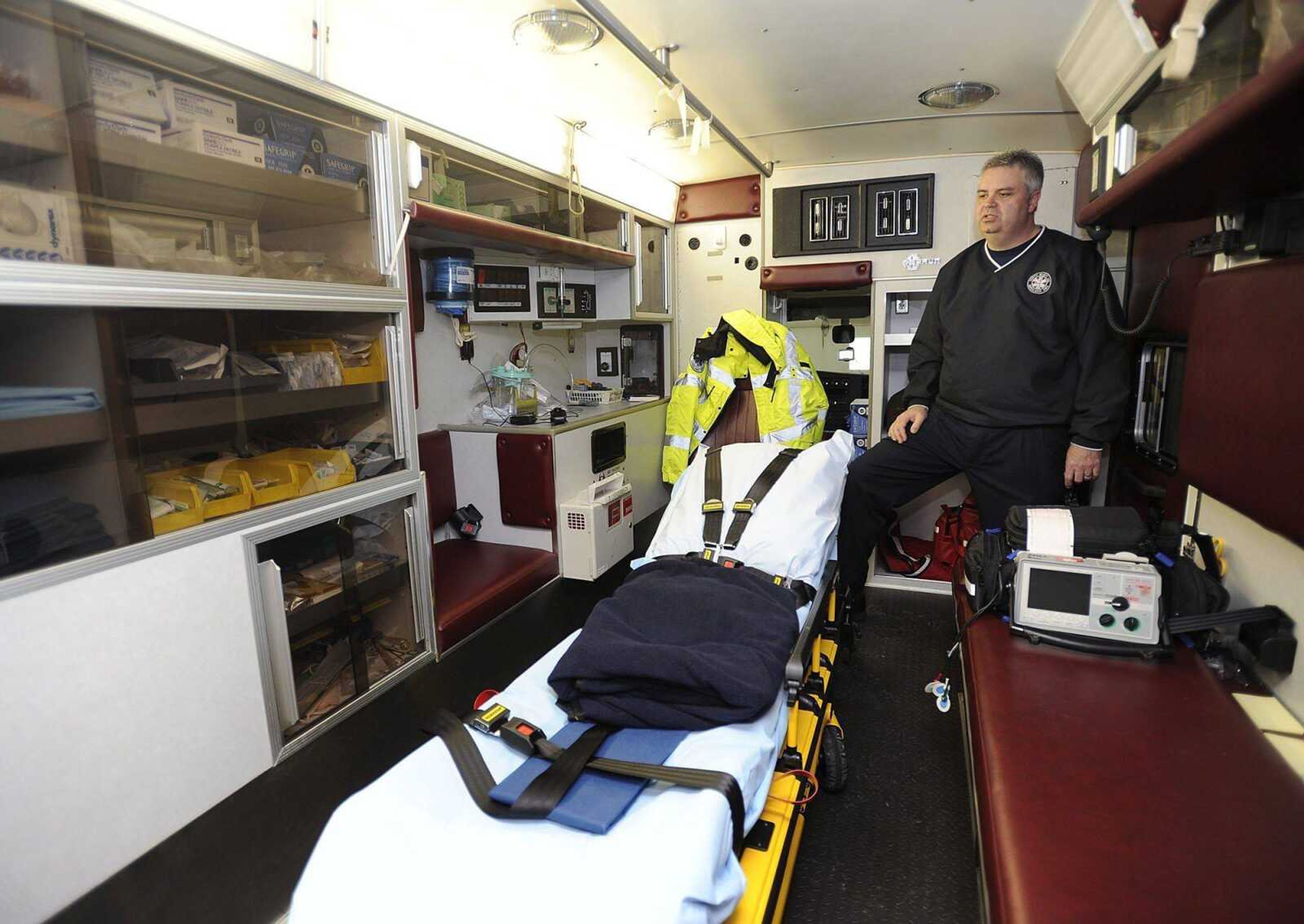EDITOR'S NOTE: The name of the North Scott County Ambulance District director has been corrected.
Delayed action at the federal level to find a long-term solution to cuts in Medicare's reimbursement rates has urban and rural ambulance districts throughout Missouri taking a more careful look at their 2010 budgets.
While a number of districts in Southeast Missouri have prepared for the cuts -- averaging 20 percent in the state's sparsely populated areas -- they are still finding the situation challenging.
The cuts, which went into effect Jan. 1 and represent a $3.5 million loss to ambulance services statewide, affect a district's base rate, or what they charge per response, and a mileage rate for each transport. The reimbursement rate cuts are most devastating in areas like Bollinger, Perry or Stoddard County, where ambulance crews make fewer trips and travel longer distances.
"As the weight of the reimbursement moves toward mileage, the rural areas get hurt because there's not any extra there for your mileage costs," said Cape County Private Ambulance Service president John Russell. "The super-rural services, their trip volumes for the year are substantially less than what ours are. They have fewer opportunities to make up the difference."
For Bollinger County Ambulance Service, the cuts in reimbursement rate mean it will receive around $100 less per patient.
Dan Tucker, director of the Bollinger County ambulance district, said nearly 65 percent of the district's runs involve Medicare patients. The district responds to fewer than 1,000 calls per year.
"It's challenging for us, but we've known it was coming for two or three years. We started tightening our belts a couple years ago," Tucker said.
Tucker said while Bollinger County is subsidized and not all its revenue comes from Medicare reimbursement, long-term cuts could mean making equipment last longer or not hiring any additional staff.
Medicare provides health coverage for seniors age 65 and older and people with disabilities. Part A of the coverage is primarily hospital insurance, and Part B is for other medical uses, such as outpatient care or ambulance transportation. Medicare helps pay for ambulance service only if transportation in a different vehicle would endanger the individual's health.
For more rural ambulance services, like Cape County or North Scott County Ambulance, cuts are less severe. All rural ambulance districts were hit with a 3 percent cut in their reimbursement rate payment. While the cut for services in Cape Girardeau County means a $35,000 to $40,000 decrease in revenue, Russell said the financial effect, considering its annual $2.5 million budget, is relatively small.
"We tried to budget conservatively. We knew this was coming, and as a consequence we're in a pretty good position to deal with it," he said.
Cape County Private Ambulance Service takes around 7,200 calls per year, and about 60 percent of the runs involve Medicare patients.
"We haven't even made any rate changes because the impact is relatively minimal to our operation. But our operation is not typical within Southeast Missouri because of our trip volumes and the fact that we have two hospitals in town," Russell said.
In North Scott County, the 3 percent cut means a $6,000 decrease in revenue for 2010, a minimal loss for a $900,000 budget.
"It's not going to kill us," said Larry Chasteen, director of the North Scott County Ambulance District. "There's maybe one budgeted item you have to give up or one benefit that you have to cut back on. Over a few years, certainly it adds up, but it's not going to devastate the ambulance services."
What concerns Chasteen most is remaining competitive on paramedic salaries while there's a decrease in revenue. The demand for paramedics is higher than emergency medical technicians, he said, because a district can offer advanced life support with paramedics on staff.
ehevern@semissourian.com
388-3635
Pertinent addresses:
Cape Girardeau, MO
Chaffee, MO
Marble Hill, MO
Connect with the Southeast Missourian Newsroom:
For corrections to this story or other insights for the editor, click here. To submit a letter to the editor, click here. To learn about the Southeast Missourian’s AI Policy, click here.







